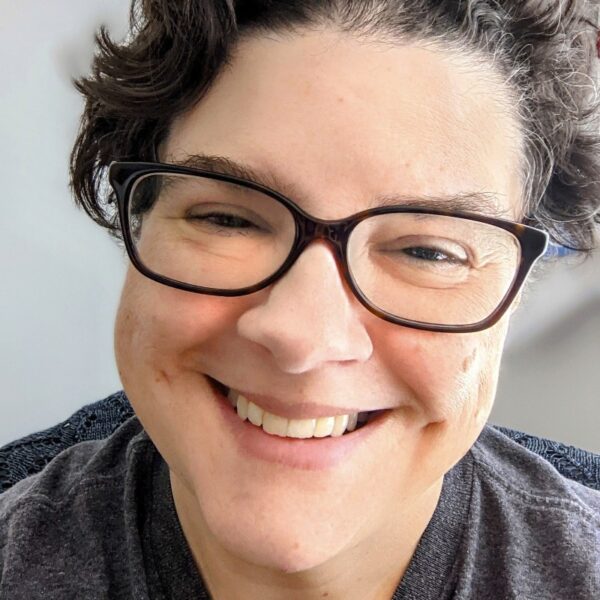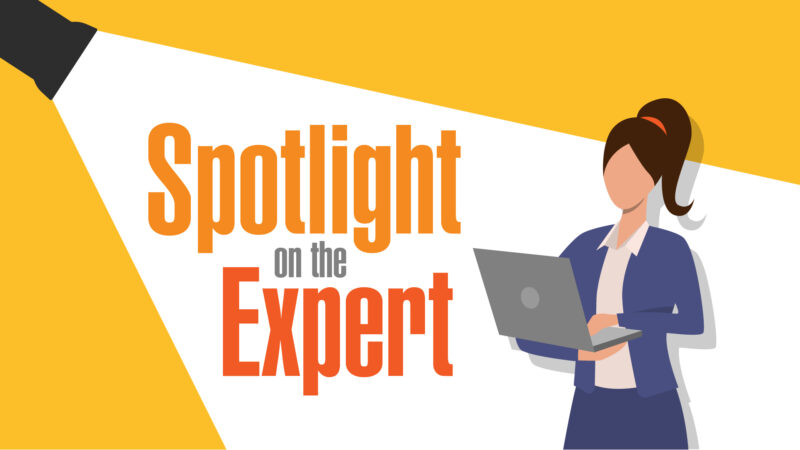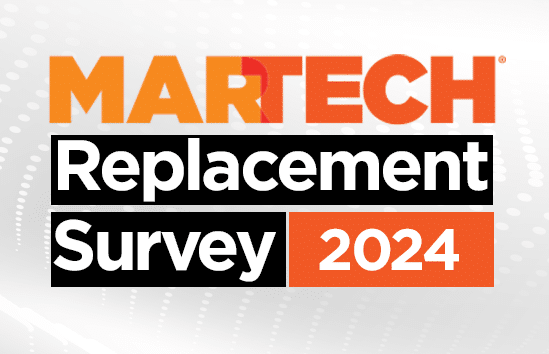Our “Spotlight on the expert” series digs deeper into the stories of our expert contributors. This interview has been edited for clarity and length.
Michelle Tackabery is a digital asset manager with Turning Stone Enterprises, a collection of hospitality, gaming, recreation, retail and service brands. A content marketing specialist and a digital librarian, she is also, of course, a MarTech contributor. Michelle will be speaking on digital asset management and AI at The MarTech Conference in September.

Q: You’re very much from North Carolina. Georgia for a few months, but otherwise, education and career in the same region?
A: Pretty much. I was born in New York City; we moved to North Carolina when I was 12, so I spent my high school and college years here. I was up in Chicago for a brief time. I did retail after college for about 13 years. I was doing well in retail — I had gotten to a district manager position — but the hours were terrible, I hated working on the holidays and I wanted to get to a position where I could write as part of my job. I’ve been writing since I was a kid. I did a bunch of personality tests, had a [career] coach for a while, and marketing kept coming to the top. I quit retail and started at the very bottom in marketing — a part-time marketing administrative assistant.
Within six weeks, I had grown to a full-time job and within six months to a salaried position. I just loved marketing so much. It was the year 2000 and I was poised to be a digital marketer. I was lucky to get in on the ground floor with search and keywords and writing for the web, learning to code, things like that. I skilled up as I went.
Q: And you were in the right place to do so?
A: Yes, we have the Triangle area — Raleigh, Chapel Hill and Durham — and we have the Raleigh Technical Park. It’s just full of software and pharmaceutical companies, so it was a great place to be a marketer. You could always find a job, but a lot of those jobs were contracting jobs so I moved around a lot. I learned to be flexible and open to the new technology coming through — and there was always new technology.
Q: Your first degree in technical communication seems relevant to all this.
A: Yes, definitely. My focus was website development and also online “writering” as they called it at the time — how do you communicate differently online, what’s going on with social media? The degree was great; North Carolina State has always been at the cutting edge of technical communication, one of the top programs in the world. There was a rhetorical focus, but I also learned hard skills like using programs like Dreamweaver (I had always done hard coding before).
Dig deeper: MarTech Spotlight interviews
Q: It’s clear from your résumé that you’ve moved quite frequently between positions, but it sounds like that was the environment you were in, is that right?
A: Absolutely. The kinds of companies we have here in Raleigh, marketing is not core to the business. It makes more sense for them to use contractors for sales, marketing and some of the operational functions. The salaried employees are engineers, scientists and researchers. A lot of times, the marketing contracts are very project-oriented, like developing websites and campaigns for a new range of products. Or they’re adding a major software platform and they need skilled contractors to implement the platform, train people, then your job’s over and you go to the next place. It’s a very consultant mindset. To me, it was very exciting and I always wanted to move to the new thing.
Q: For several years, you offered freelance writing services too?
A: I did. A lot of consulting for small businesses: build a website, start them off blogging, that kind of thing. It was a lot of fun and doing it between jobs helped me keep up with my mortgage payments.
Q: Librarianship then took you back to college?
A: At the time I was working, so I looked for classes I could take at night to get up to speed on things I really needed to know, like knowledge graphs, metadata, taxonomy. But North Carolina Central had this program that was completely virtual, very affordable and included learning how to archive everything — documents, film, all kinds of media — but also deep dives on metadata schema and how to transform a database into a digital asset management system.
I finished a contract during my first year. Then came COVID. So I didn’t have a job but was still in school. I was able to devote my time to school and that put me a little bit ahead of the game. The project I had just left at IBM was about AI software and training LLMs. I was doing marketing for that and talking to a lot of software engineers and learning how AI works from the inside. With AI and my library degree, I felt like I had a really good arsenal of tools.
Actually, I was a little early with these skills, but fortunately Turning Stone was a little ahead of the curve and they wanted to implement a digital asset management system; they wanted somebody who also had marketing experience. Understanding what marketing and sales need from our team is crucial to our DAM and so having the marketing expertise and the DAM expertise is really why I got the job.
Q: It seems to me that one reason to have your digital assets in order today is to exploit generative AI fully, because there’s a difference between having AI that can train itself on existing business assets and just turning AI on to create something out of nothing.
A: Absolutely, and it’s not to blame anyone because five years ago we didn’t think to rename our logo files or put the brand name in every document or track licensing agreements for every photo. We do a lot of photoshoots — food, wedding locations, party locations, conferences — and we have licenses around the photos and we need to track that. That information needs to be in the file. GenAI is here to stay and you’d better have your metadata in order.
Q: How useful is AI in terms of creating metdata by scanning a document of analyzing an image? Does that work?
A: I would say it’s working about 50%. We have literally about a terabyte of assets that have no metadata, so I am still working on that so that we have enough information for the AI to learn. You have to have enough assets with metadata to train the AI on. You can’t just train it on 10 assets. We’ve now pulled back into the DAM probably about 10 years’ worth of assets and it’s just me doing the metadata, but we’re starting to figure out standing operating procedures for our creative folk and marketing folk so they will start taking on the work. We’re going to have them fill out metadata forms within their applications. We’re alos working on APIs that will pull in metadata for me.
We just synced all of our Workfront metadata into Adobe Experience Manager just two weeks ago, so new assets coming in will have all their metadata. I am like, “Hallelujah!”
Email:
See terms.
The post Spotlight on the expert: Michelle Tackabery appeared first on MarTech.





